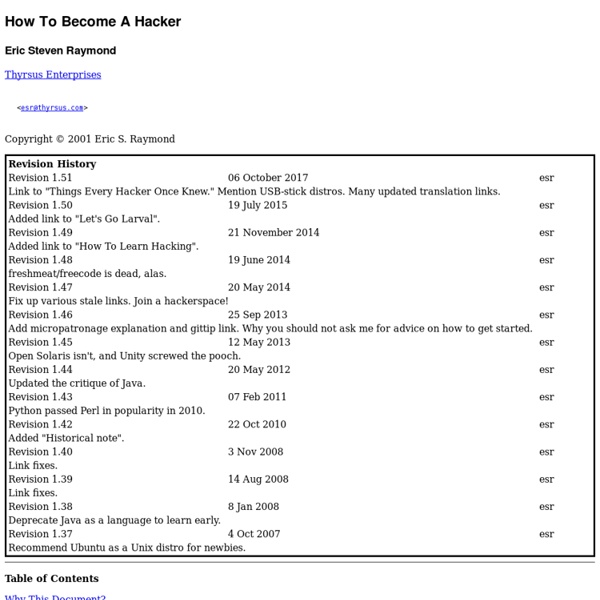The GNU C Reference Manual
The GNU C Reference Manual This is the GNU C reference manual. Preface This is a reference manual for the C programming language as implemented by the GNU Compiler Collection (GCC). Specifically, this manual aims to document: The 1989 ANSI C standard, commonly known as “C89” The 1999 ISO C standard, commonly known as “C99”, to the extent that C99 is implemented by GCC The current state of GNU extensions to standard C This manual describes C89 as its baseline. By default, GCC will compile code as C89 plus GNU-specific extensions. The C language includes a set of preprocessor directives, which are used for things such as macro text replacement, conditional compilation, and file inclusion. Credits Contributors who have helped with writing, editing, proofreading, ideas, typesetting, or administrative details include: Diego Andres Alvarez Marin, Nelson H. Some example programs are based on algorithms in Donald Knuth's The Art of Computer Programming. 1 Lexical Elements tokens . 1.1 Identifiers uU lL \a
Algorithm
Flow chart of an algorithm (Euclid's algorithm) for calculating the greatest common divisor (g.c.d.) of two numbers a and b in locations named A and B. The algorithm proceeds by successive subtractions in two loops: IF the test B ≥ A yields "yes" (or true) (more accurately the numberb in location B is greater than or equal to the numbera in location A) THEN, the algorithm specifies B ← B − A (meaning the number b − a replaces the old b). Similarly, IF A > B, THEN A ← A − B. The process terminates when (the contents of) B is 0, yielding the g.c.d. in A. (Algorithm derived from Scott 2009:13; symbols and drawing style from Tausworthe 1977). In mathematics and computer science, an algorithm ( i/ˈælɡərɪðəm/ AL-gə-ri-dhəm) is a step-by-step procedure for calculations. Informal definition[edit] While there is no generally accepted formal definition of "algorithm," an informal definition could be "a set of rules that precisely defines a sequence of operations Formalization[edit]
Blog about software technologies - PHP, Java, MySQL, etc.
Building Internet of Things with the Arduino
Learning Should Be Your Top 2013 New Year’s Resolution
As we get closer to the New Year, the ritual of making resolutions begins and we all flock to the usual patterns: we want to eat healthier, work out more, get promoted, or spend more time with our kids and family. These are with no doubt worthwhile goals, but I’d like to pose an important challenge for founders: Make learning and development your key resolution in 2013. If you’re a startup, you are by definition competing with the smartest people in the world – either large companies with more resources than yours or fellow entrepreneurs who are hoping to disrupt large companies. Your knowledge can make the difference between failure and success. Learning a new skill can also increase the chance of serendipity, the “magic” moment when seemingly unrelated concepts form an orignal thought in your head. Considering picking up new skills? Stanford’s Venture Lab 1) Udacity offers a range of free online courses from top University professors. 4) Technical courses from Udemy: Eze Vidra Like this:
Postfix Increment and Decrement Operators: ++ and -- (C++)
Important! Selecting a language below will dynamically change the complete page content to that language. <a id="b7777d05-f9ee-bedd-c9b9-9572b26f11d1" target="_self" class="mscom-link download-button dl" data-bi-cN="download" data-bi-cT="link" data-bi-dlnm="Visual Studio 2005 Retired documentation" data-bi-dlid="55984" data-bi-bhvr="41" data-bi-id="downloadlink" data-bi-containerName="Download container" href="confirmation.aspx? PDF files that contain the Visual Studio 2005 documentation. Note: There are multiple files available for this download. Supported Operating System Windows 2000 Service Pack 4, Windows Server 2003 Service Pack 1, Windows Vista, Windows XP Service Pack 2 A PDF viewer The download contains several pdf files. Important! PDF files that contain the Visual Studio 2005 documentation. Note: There are multiple files available for this download. The download contains several pdf files.
Operators in C and C++
When not overloaded, for the operators &&, ||, and , (the comma operator), there is a sequence point after the evaluation of the first operand. C++ also contains the type conversion operators const_cast, static_cast, dynamic_cast, and reinterpret_cast. The formatting of these operators means that their precedence level is unimportant. Table[edit] For the purposes of this table, a, b, and c represent valid values (literals, values from variables, or return value), object names, or lvalues, as appropriate. R, S and T stand for any type(s), and K for a class type or enumerated type. "Can overload" means that the operator can be overloaded in C++. Arithmetic operators[edit] Comparison operators/relational operators[edit] Logical operators[edit] Bitwise operators[edit] Compound assignment operators[edit] Member and pointer operators[edit] Other operators[edit] Notes: Operator precedence[edit] A precedence table, while mostly adequate, cannot resolve a few details. Notes[edit] Precedence and bindings



